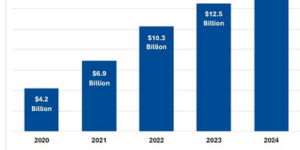
Insurers could see some version of an international capital standard by 2016, Federal Insurance Office Director Michael McRaith told a recent gathering of industry professionals in Washington, D.C.
There’s a caveat, however: it will likely be more incremental than industry changing.
“The first objective of 2016 is to complete some … primitive version of the international capital standard, [but the] expectation is that it will not be a final magical formula,” McRaith said during the Networks Financial Institute 11th Annual Insurance Public Policy Summit on March 17. “We will move one step forward to the ultimate goal.”
McRaith noted that there is an “incredible diversity” of opinion around the world on this issue, and so he said the first step toward an international capital standard won’t please many. He said it is “likely to be smaller, and larger than some would like.”
That may be small consolidation for the insurance industry. In the wake of the 2008 financial crisis, an international push has gained momentum to apply global capital requirements to large U.S. insurers who have significant international operations. Last November, the International Association of Insurance Supervisors (IAIS), a Swiss-based group of regulators from nearly 140 countries, completed a draft of what would be the first global insurance capital minimum standard, something that would initially affect American International Group, Allianz SE and MetLife, along with six other too-big-to-fail insurers.
There’s some uncertainty about the issue, because U.S. regulators may ultimately decide not to apply the new global capital standards, despite U.S. participation through groups such as the IAIS and the International Insurance Society (IIS). Industry lobbyists, meanwhile, have taking a strong stance against their implementation. National Association of Mutual Insurance Companies and the Property Casualty Insurers Association of America underscored this with their release last year of a report that concluded global capital requirements would be unnecessary and harm U.S. consumers.
McRaith said that the U.S. has a “tremendously diverse” insurance market “which we value and must promote.” At the same time, he noted, that some of the largest insurers are owned by non-U.S. holding companies, reflecting the global risk the insurance industry faces.
Global capital standards, he said, must take these international risks into account, but also respect the U.S. regulatory system, which integrates state and federal requirements and, by the consensus of many, has worked very well for property/casualty and other insurers. Global capital standards, if done correctly, will enhance, rather than inhibit, the U.S. regulatory system, he said.
“The language for interconnected global insurance standards is so important,” he said. “Such action will prevent gaps in regulation that could create global vulnerability and stress in the financial system, while ensuring a level playing field.”
For those in the property/casualty and life insurance industries wary of global capital standards, McRaith said that cooperation on the issue makes sense, because the ultimate outcome must help maintain regulatory standards “here at home.”
In the ongoing global negotiations through IAIS and in other venues, McRaith said that U.S. continues to work closely on the issue.
He added that respective parties have kept their focus on data, “so policy decisions are ultimately fact-driven.”
“Participation of U.S. firms in these exercises has been a tremendous asset, and allows for integration of the U.S. viewpoint into the international standard-setting in a way that would otherwise not be possible,” McRaith said.
Still, McRaith emphasized that discussions continue on a slow pace, as regulators from multiple countries hash out their many differences.
“Given the enormous amount of technical work and enormous amount of global difference, this work will not be achieved soon,” he said. “We do have milestones scheduled in 2016 and 2018,” with “continued incremental progress.”
McRaith added that the “unanimous goal in the U.S. and [with its international regulatory counterparts] is to continue to establish milestones that are realistic, achievable, and fact/consensus-driven.”
He noted to the insurance industry-crowd that any final international regulatory standard-decisions would be implemented through national authorities such as the Federal Reserve and state regulators. McRaith also assured his audience that “we want to share with Congress our views of the developing of the insurance sector nationally and globally, and I look forward to that engagement.”





















 No Escape From Tariffs — Not Even for D&O Liability Insurers
No Escape From Tariffs — Not Even for D&O Liability Insurers  Revisiting California’s Wildfires: A Personal Journey
Revisiting California’s Wildfires: A Personal Journey  Roof Repair and Replacement Costs Up Nearly 30% Since 2022: Verisk
Roof Repair and Replacement Costs Up Nearly 30% Since 2022: Verisk  Wildfire Losses Cut Chubb Q1 Net Income 38%; Tariffs Create ‘Confusion’
Wildfire Losses Cut Chubb Q1 Net Income 38%; Tariffs Create ‘Confusion’ 











